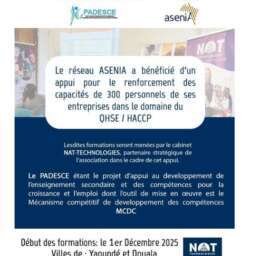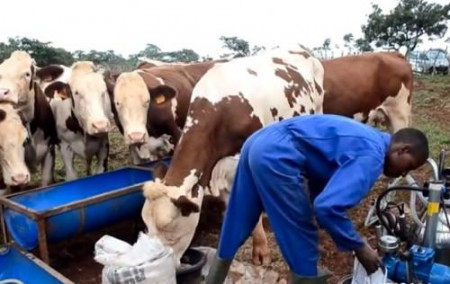(Business in Cameroon) – Milk production in the Adamaoua region has significantly increased in recent years, with some farms reporting a 75% rise in daily output, from 20 liters to 35 liters. Ismaïla Bello, CEO of Sahel Agro Consulting, linked this growth to the introduction of Montbéliarde cattle into herds across the Adamaoua, Far North, Centre, South, and West regions. Bello, himself a breeder and milk producer, shared these insights on June 3, 2025, during a meeting at the Ministry of Small and Medium-Sized Enterprises with a visiting delegation from the French employers’ federation Medef.
Under the Livestock Development Project (Prodel), funded by the World Bank, Cameroon has acquired 495 Montbéliarde heifers since January 2023. These animals were procured in three waves of 165, beginning in 2021. The Montbéliarde breed is favored for its high milk yield performance. Prodel officials note the breed’s ability to adapt more easily to harsh climatic conditions, yielding 20 liters of milk per cow daily, with potential for higher output through technological enhancements in milking.
Despite these improvements in production, reaching 176,600 tonnes in 2023, up from 173,900 tonnes in 2022 (a 2% increase) according to official figures, Cameroon continues to face an official milk production deficit of nearly 120,000 tonnes per year. This shortfall is typically covered by dairy product imports.
In 2023, for instance, Cameroon spent over 35 billion CFA francs to import 17,217 tonnes of powdered and condensed milk, an increase of 2 billion CFA francs year-over-year, as reported by the National Institute of Statistics (INS) in its foreign trade report.
BRM



































